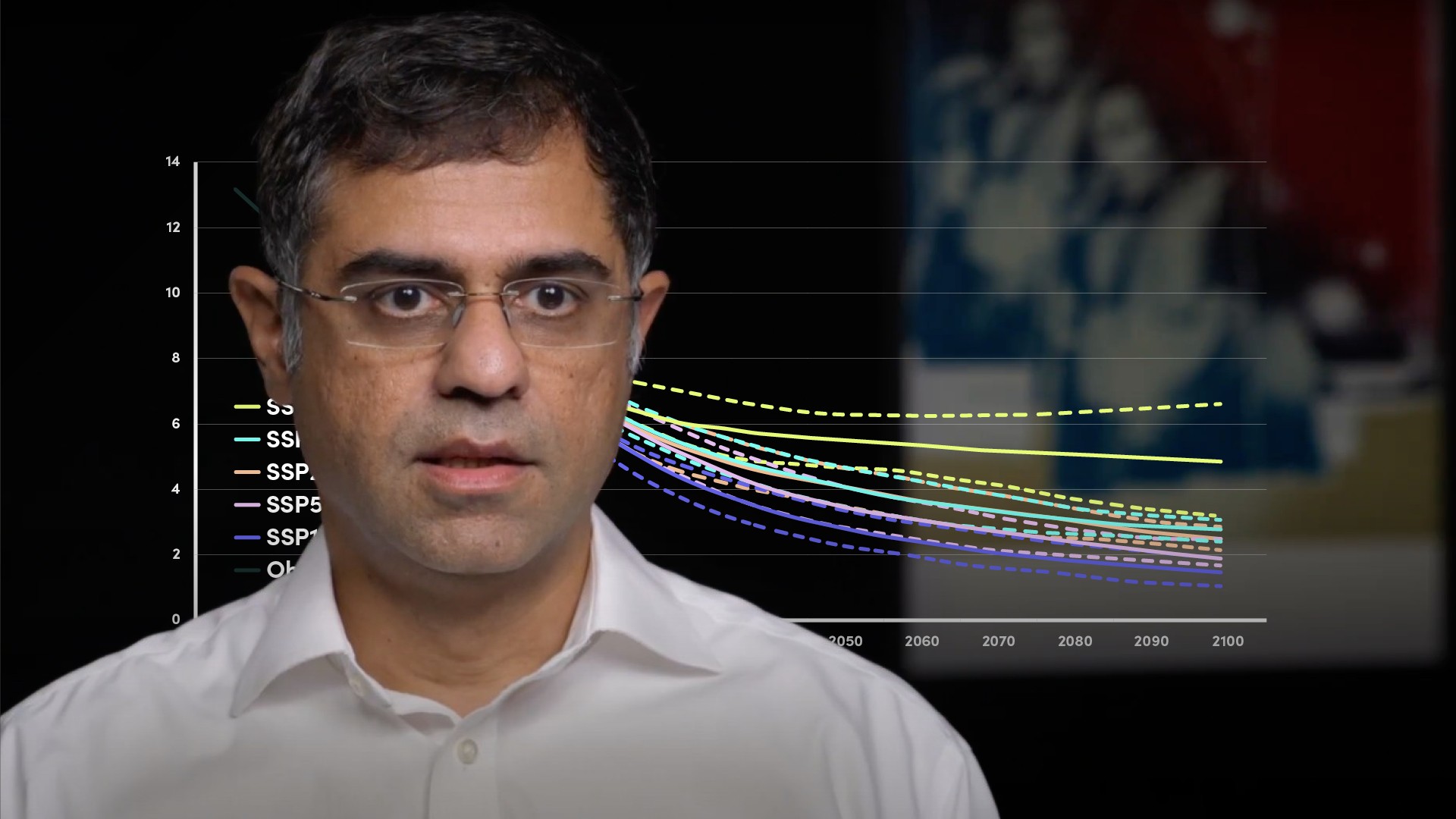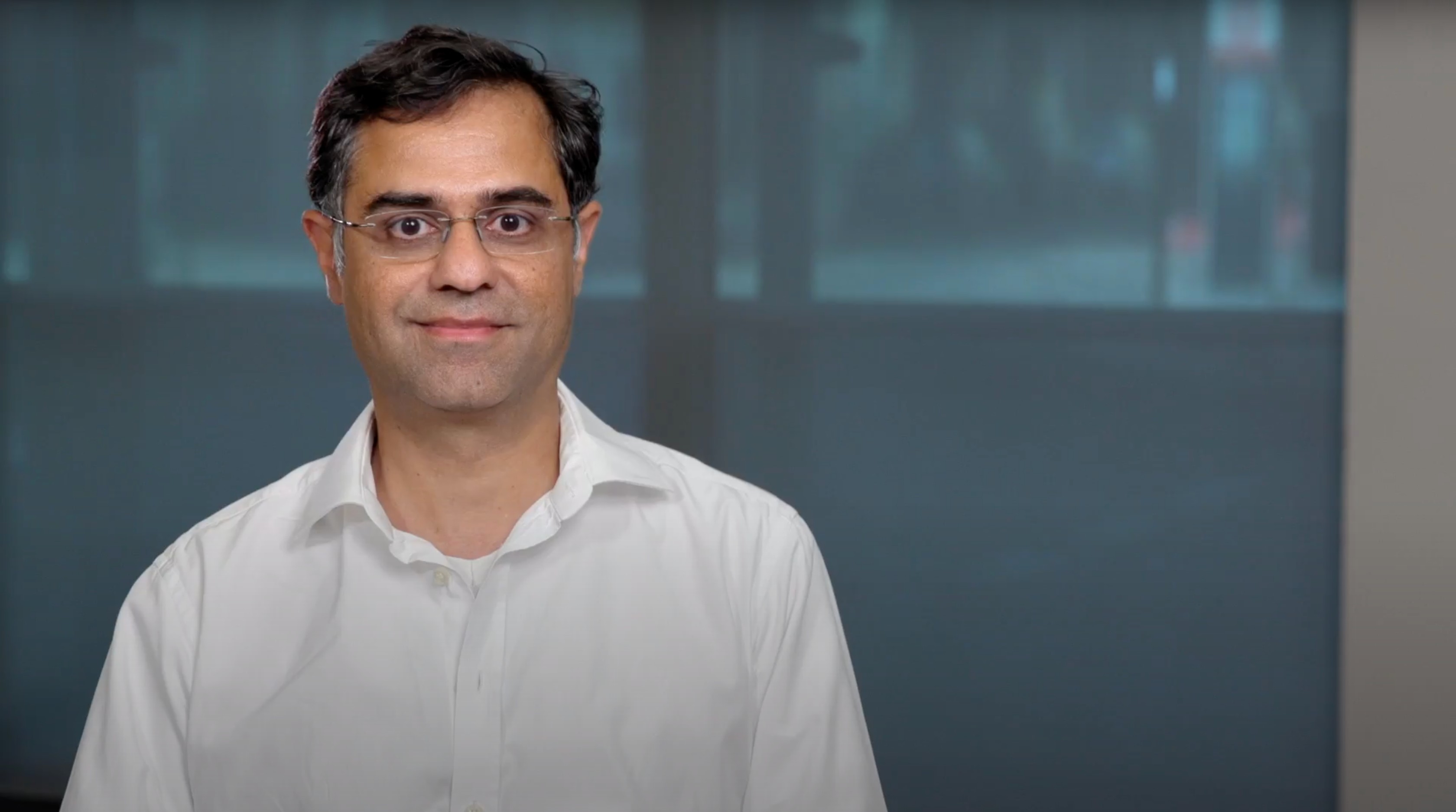
Modelling the Path to Net Zero

Amit Kara
30 years: Macroeconomist
In the previous videos, Amit Kara explained how human behaviour is directly responsible for climate change and the need for government intervention to tackle the climate crisis. In this video he quantifies the link between human activity and emissions by building a simple scenario model known as Kaya identity.
In the previous videos, Amit Kara explained how human behaviour is directly responsible for climate change and the need for government intervention to tackle the climate crisis. In this video he quantifies the link between human activity and emissions by building a simple scenario model known as Kaya identity.

Modelling the Path to Net Zero
13 mins 26 secs
Key learning objectives:
Understand what needs to be adjusted to achieve a high-ambition scenario
Understand what is the Kaya identity
Identify what will happen in a low-ambition scenario, using the Kaya identity
Overview:
The Kaya identity is a helpful tool that highlights some of the tradeoffs and challenges involved to achieve net zero. The Kaya identity shows that we will require a radical shift in the way we generate, and the way in which we use energy.
What is the Kaya identity?
The identity is named after an academic, Yoichi Kaya, from the University of Tokyo. The Kaya identity is a neat tool that helps decompose the source of human or anthropogenic emissions. More specifically, the Kaya identity links total greenhouse gas emissions to population, energy efficiency and carbon emissions efficiency.
How do we derive the Kaya identity?
- Start with total emissions, M
- M ≡ M
- Multiply both sides of this identity by population, P, so we get
- M x P is identically equal to M x P
- Next, we multiply both sides by GDP which is given by Y and by energy used which is given by E. We get
- M x P x Y x E ≡ M x P x Y x E
- Rearrange this identity by isolating M on the left-hand side and taking P, Y, and E over to the right-hand side.
- M ≡ P x Y/P x E/Y x M/E
- This is an identity because P, Y and E cancel out leaving M = M
Using Kaya’s identity, what will happen in a low ambition scenario?
- We’ll start with the population. According to this scenario, world population will rise at a moderate pace to peak at around 9.5 billion in the second half of this century.
- The next variable in the equation is GDP-per-head. Under SSP2 global per capita GDP rises from the current level of around $10,000 to $60,000 in 2100.
- Under SSP2, energy intensity falls from around 8 terajoule per dollar today to 2 terajoule per dollar in 2100.
- Under our middle of road scenario, carbon intensity falls from around 75 grams of CO2 per megajoule today to 60 in 2100
- Putting all of these assumptions into the Kaya equation, we get annual emissions rising from 40 giga tons to more than 80 giga tons by 2100
- According to other supplementary models, this level of emissions will raise global temperature by around 2.3 degrees by 2050 and by 3.5 to 4.0 degrees centigrade by 2100, which is significantly above the Paris ambition which was to restrict temperature rise to well below 2 degrees.
What will it take to lower emissions to a level that will restrict the temperature rising by less than 2°C or even less than 1.5°C?
According to the scientists, net emissions will have to drop to 0 in the next 50 years to achieve global warming of less than 2°C and net emissions will have to fall to 0 in the next 30 years if we are to achieve less than 1.5°C warming.
What will need to adjust to achieve a high ambition scenario?
- Let us start with the somewhat simple but not too unrealistic assumption that population growth is exogenous and per capita GDP growth remains in line with experience of the past 50 years which is essentially what we assumed in the low ambition scenario
- The burden of adjustment must therefore fall on the two other terms in the equation, energy intensity and emissions intensity. One or both of these terms needs to fall to zero or close to zero. In other words, we either stop using energy altogether to produce output or we generate all our energy from fuel that does not generate any greenhouse gasses
- The reality is that we will continue to use energy in some form or another
- Alongside technological change, we will also require behavioral change. Examples of this include driving a fuel-efficient car, warming up just the amount of water than you need for your tea rather than filling the kettle or wearing a jumper at home which then allows you to use less energy for heating.
- The final term in the Kaya identity is emissions efficiency. Our economies will also have to adjust to a very different mix of fuels if we are to stand a chance to achieve net zero emissions
- Carbon is the most toxic fuel. Energy that is generated by carbon will have to be phased out and we will have to generate most if not all our energy from carbon free or renewable sources. For this we will have to overcome the hurdle of cost and social resistance, for example to wind farms, nuclear and hydropower
- We will also have to overcome problems associated with volatility and unpredictability associated with wind and solar energy and storage costs.

Amit Kara
There are no available Videos from "Amit Kara"





















